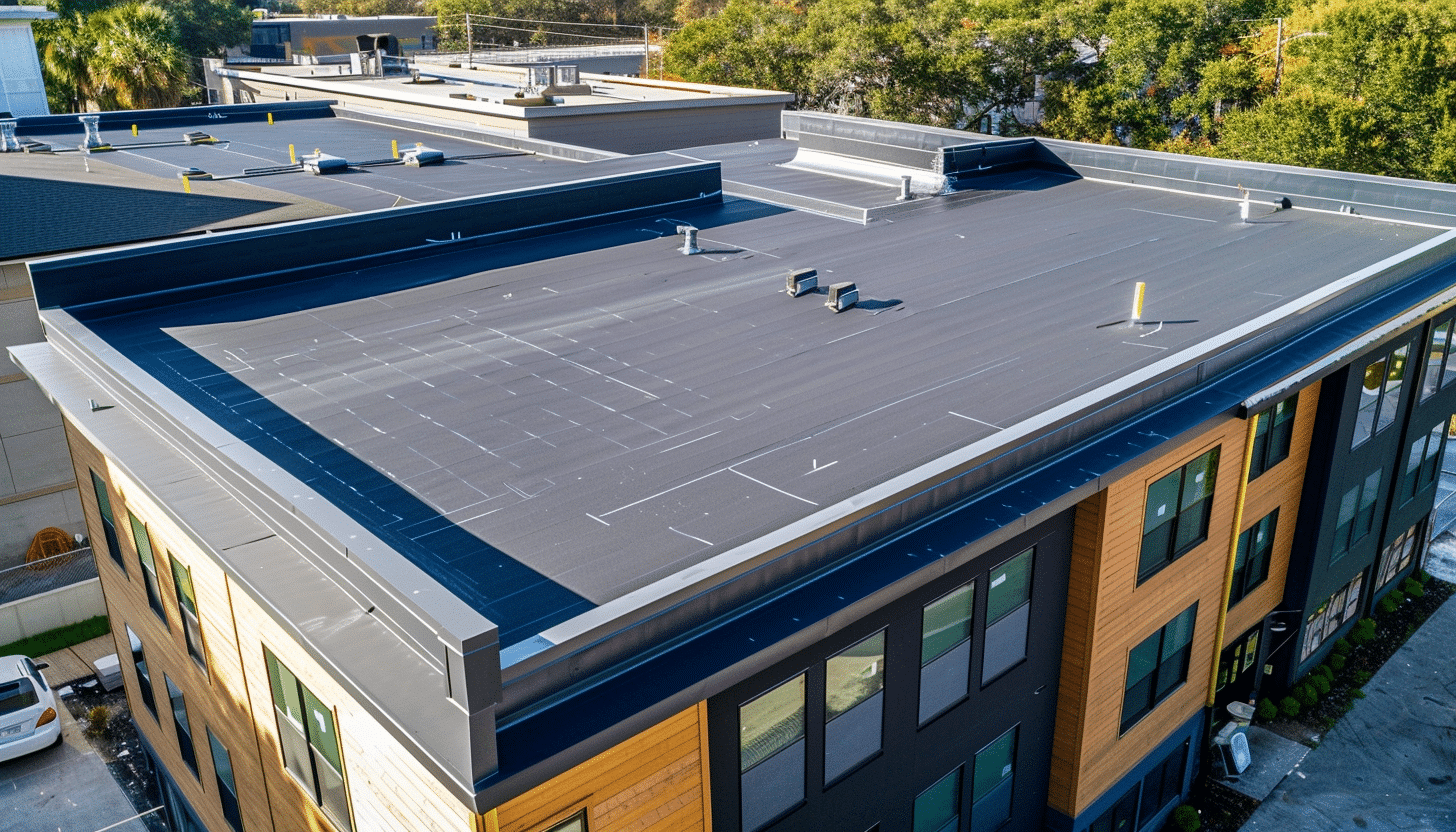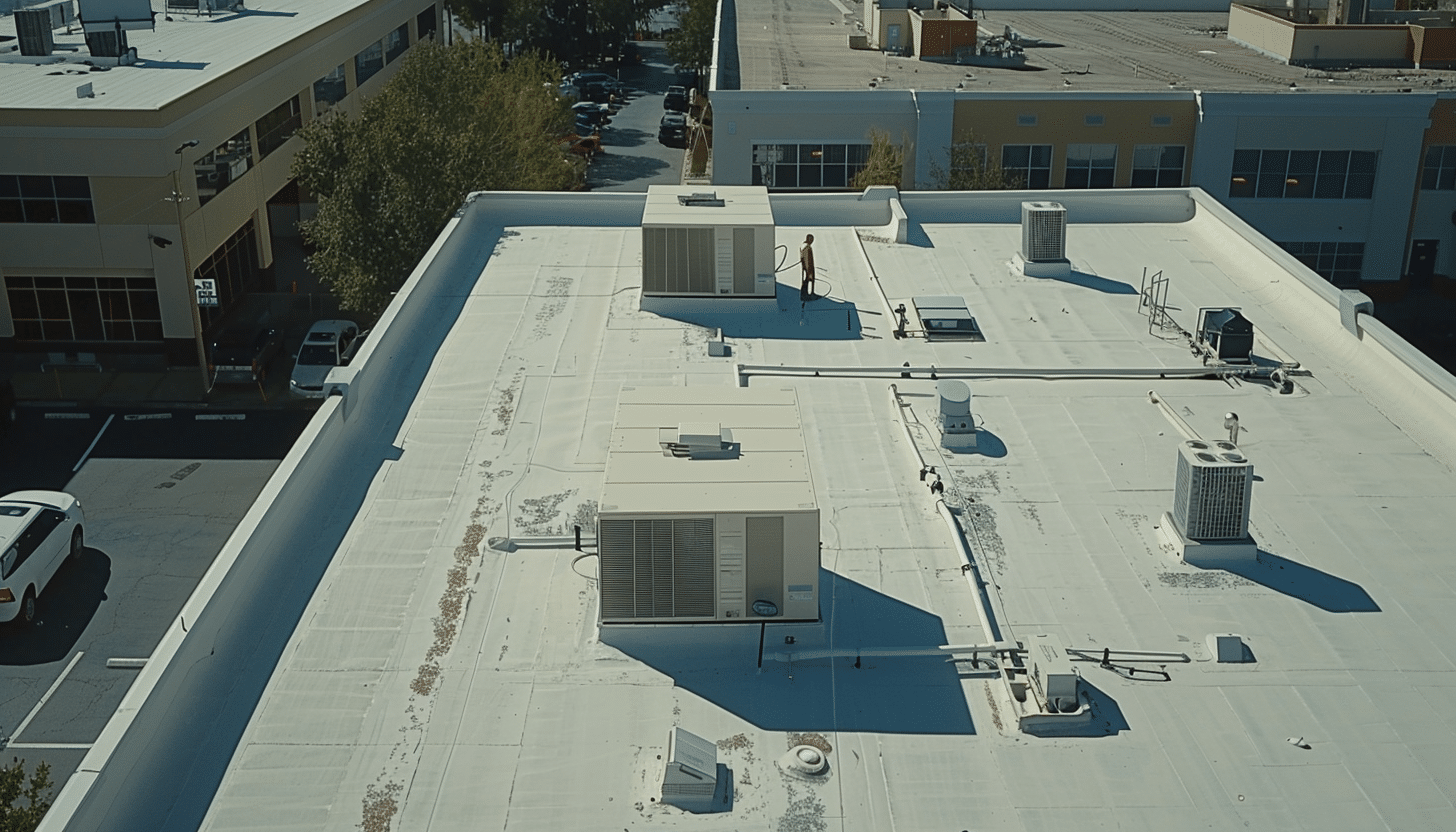Understanding the Need for Recoating
Flat roofs are a popular choice for many modern homes and commercial buildings due to their sleek design and efficient use of space. However, like any roofing system, they require regular maintenance to ensure longevity and performance. One crucial aspect of flat roof maintenance is recoating. But when exactly should you recoat your flat roof?
Key Indicators for Recoating Your Flat Roof
1. Visible Wear and Tear
- Cracks and Blisters: If you notice cracks or blisters on the surface of your flat roof, it’s a clear sign that the protective coating is deteriorating. These imperfections can allow water to seep in, leading to more significant damage.
- Fading and Discoloration: Over time, exposure to the elements can cause the coating to fade and lose its protective properties. If your roof looks worn out and discolored, it’s time to consider recoating.
2. Leaks and Water Damage
- Persistent Leaks: Flat roofs are particularly susceptible to water pooling. If you’re experiencing leaks despite regular repairs, it might indicate that the coating has lost its waterproofing capability.
- Water Stains: Check for water stains on the ceilings and walls inside your building. These stains are often a result of water penetrating through the damaged roof coating.

The Benefits of Regular Recoating
Maintaining a regular recoating schedule offers several benefits:
Enhanced Durability
Recoating provides an additional layer of protection, extending the life of your flat roof. It helps prevent leaks, cracks, and other damages that can compromise the integrity of the roofing system.
Improved Energy Efficiency
A well-coated roof can reflect more sunlight, reducing heat absorption. This improved energy efficiency can lower your cooling costs and make your building more environmentally friendly.
Cost-Effective Maintenance
Regular recoating is a cost-effective way to maintain your flat roof. It prevents minor issues from escalating into significant problems, saving you money on extensive repairs or replacements.

How Often Should You Recoat Your Flat Roof?
Factors Influencing Recoating Frequency
- Roof Material: Different roofing materials have varying recoating needs. For instance, asphalt-based coatings might need recoating every three to five years, while silicone or acrylic coatings can last up to 10 years.
- Climate Conditions: Areas with extreme weather conditions, such as heavy rainfall, intense sunlight, or high winds, might require more frequent recoating to protect the roof from damage.
- Roof Usage: If your flat roof supports heavy equipment or frequent foot traffic, it might wear out faster and need more frequent recoating.
Steps to Recoat Your Flat Roof
Recoating your flat roof involves several steps to ensure a durable and effective finish. Here’s a detailed guide to the recoating process:
1. Inspection and Cleaning
- Thorough Inspection: Begin by inspecting the entire roof surface for any signs of damage, such as cracks, blisters, or leaks.
- Cleaning the Surface: Clean the roof thoroughly to remove dirt, debris, and any previous coating that may be peeling or damaged. This step ensures that the new coating adheres properly.
2. Repairing Damages
- Fixing Cracks and Blisters: Use roofing cement or appropriate patching material to repair any cracks or blisters identified during the inspection.
- Sealing Leaks: Ensure all leaks are properly sealed to prevent water from penetrating the new coating.
3. Applying the New Coating
- Choosing the Right Coating: Select a coating material suitable for your roof type and climate conditions. Popular options include acrylic, silicone, and asphalt-based coatings.
- Application Process: Follow the manufacturer’s instructions for application. This usually involves applying the coating evenly across the roof surface using a brush, roller, or spray system.

Maintenance Tips for Your Recoated Flat Roof
Regular Inspections
Schedule regular inspections to catch any potential issues early. This proactive approach helps maintain the integrity of the roof coating and extends its lifespan.
Prompt Repairs
Address any minor damages immediately to prevent them from escalating. Quick repairs can save you from costly fixes down the line.
Clean the Roof
Keep the roof clean and free from debris. Regular cleaning prevents buildup that can damage the coating and compromise its protective properties.

FAQs
Q1: How long does a new roof coating last?
A: The lifespan of a new roof coating depends on the material used and environmental factors. On average, it can last between five to ten years.
Q2: Can I recoat my flat roof myself?
A: While some homeowners may choose to recoat their roofs, it’s generally recommended to hire a professional. Proper application is crucial for the coating’s effectiveness and longevity.
Q3: What are the costs associated with recoating a flat roof?
A: The cost can vary based on the size of the roof, the type of coating used, and the extent of any repairs needed. It’s best to get a few quotes from reputable roofing contractors to understand the potential expenses.
Q4: What are the signs that my flat roof needs recoating?
A: Common signs include visible wear and tear, persistent leaks, fading, and discoloration of the roof surface.
Q5: How can I maintain my recoated flat roof?
A: Regular inspections, prompt repairs, and keeping the roof clean are essential maintenance practices to ensure the longevity of your recoated flat roof.
Conclusion
Recoating your flat roof is an essential maintenance task that can extend the life of your roof, improve energy efficiency, and save you money on repairs. By understanding the signs that your roof needs recoating and following a regular maintenance schedule, you can protect your investment and ensure your roof remains in excellent condition for years to come. Remember, when in doubt, consult with a professional roofing contractor to get the best advice and service for your specific roofing needs.

0 Comments